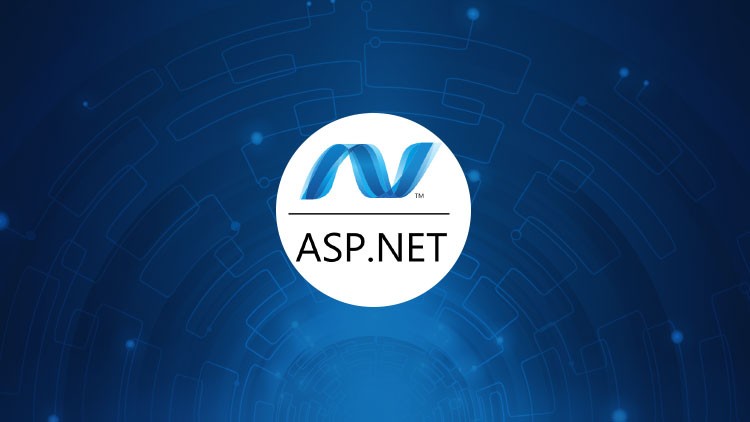Mastering ASP.NET Development: From Fundamentals to Advanced
- Description
- Curriculum
- FAQ
- Reviews
Welcome to the comprehensive course on ASP.NET development! This course is designed to equip you with the essential skills and knowledge needed to become proficient in building web applications using ASP.NET framework. Whether you are a beginner or an experienced developer looking to expand your expertise, this course will guide you through a structured learning journey from the fundamentals to advanced topics.
Throughout this course, you will explore various aspects of ASP.NET, including essential concepts, MVC architecture, Web API development, web services, real-time communication using Signal-R, and integration with C# Windows applications using ADO .NET. Each section is meticulously crafted to provide you with a deep understanding of the subject matter and hands-on experience to reinforce your learning.
By the end of this course, you will have the skills and confidence to develop robust, scalable, and feature-rich web applications using ASP.NET, empowering you to pursue career opportunities in web development or enhance your existing projects with cutting-edge technologies.
Get ready to embark on an exciting journey into the world of ASP.NET development, where you will unleash your creativity and build innovative web solutions that make a difference. Let’s dive in and explore the limitless possibilities of ASP.NET together!
Section 1: ASP.NET Essentials
In this section, you will delve into the essentials of ASP.NET, starting with an introduction to the framework and its environment. You will explore the lifecycle of ASP.NET applications, gaining insights into event handling, server-side objects, and server controls. Through lectures, you will learn about HTML server controls, client-side interactions, and the usage of basic controls. Additionally, you will grasp directives, view state management, and validator controls for form validation. The section progresses to cover database access using ADO .NET, including uploading files and utilizing components like AdRotator and Calendar. You will also dive into advanced topics such as AJAX, data sources, and data binding, before concluding with discussions on error handling, LINQ integration, security implementations, caching, multi-threading, and deployment strategies.
Section 2: ASP.NET MVC
Transitioning to ASP.NET MVC, you will gain an in-depth understanding of the Model-View-Controller architecture. Beginning with the fundamentals and creating basic applications, you will proceed to comprehend controller responsibilities, routing mechanisms, and action parameters. The section delves into model creation, dependency injection, and URL routing intricacies. You will explore views, filters, and controllers in depth, understanding areas and implementing AJAX functionalities. By the end, you will have a comprehensive grasp of MVC concepts and practical skills to develop robust web applications.
Section 3: ASP.NET Web API
Continuing the exploration, you will be introduced to ASP.NET Web API, focusing on building RESTful services. You will understand the architecture, HTTP methods, and URL patterns essential for developing Web APIs. Through lectures, you will learn about controller and action implementations, message handlers, filters, and various security measures. Additionally, the section covers other features, such as handling exceptions, versioning, and managing configurations. By the end, you will have the expertise to design and deploy scalable and secure Web APIs.
Section 4: Web Services with ASP.NET – Creating a Currency Converter
In this section, you will delve into the world of web services using ASP.NET, specifically focusing on creating a currency converter. You will understand the fundamental concepts of web services, including their components and compilation. Through practical examples, you will learn to add, compile, and utilize web services in ASP.NET applications. By the end of this section, you will have the knowledge and skills to develop and integrate web services into your projects effectively.
Section 5: Signal-R in ASP.NET – Developing Professional Chat Application like WhatsApp Web
Concluding the course, you will explore Signal-R technology for real-time communication, building a professional chat application akin to WhatsApp Web. You will learn about Signal-R fundamentals, application architecture, and database setup. Through a series of lectures and hands-on exercises, you will develop various functionalities such as user authentication, group chats, media uploads, and friend management. By the end, you will have built a fully functional chat application and gained valuable insights into Signal-R integration.
Section 6: Signal-R in ASP.NET – Developing Professional Chat Application like WhatsApp Web
This section is a continuation of the previous one, focusing on further enhancing the chat application developed using Signal-R. You will explore advanced features such as group management, user authorization, scaling out strategies, and performance optimization. Through practical demonstrations and discussions, you will refine your application, ensuring scalability, reliability, and enhanced user experience.
Section 7: Introduction of ADO .NET in C# Windows Application
Concluding the course, you will receive an introduction to ADO .NET in C# Windows applications. You will explore ADO .NET objects, providers, and data access methodologies. Through lectures and examples, you will learn to select, insert, update, and delete data, along with accessing configurations. By the end, you will have a solid understanding of ADO .NET and its application in developing Windows-based database applications.
-
1Asp.NET Introduction Part 1Video lesson
-
2Asp.NET Introduction Part 2Video lesson
-
3Asp.NET Environment Part 1Video lesson
-
4Asp.NET Environment Part 2Video lesson
-
5Asp.NET LifecycleVideo lesson
-
6Asp.NET First ExampleVideo lesson
-
7Asp.NET Event Handling Part 1Video lesson
-
8Asp.NET Event Handling Part 2Video lesson
-
9Asp.NET Server side objects Part 1Video lesson
-
10Asp.NET Server side objects Part 2Video lesson
-
11Asp.NET Server Controls Part 1Video lesson
-
12Asp.NET Server Controls Part 2Video lesson
-
13Asp.NET HTML Server ControlsVideo lesson
-
14Asp.NET Client SideVideo lesson
-
15Asp.NET Basic Controls Part 1Video lesson
-
16Asp.NET Basic Controls Part 2Video lesson
-
17Asp.NET DirectivesVideo lesson
-
18Asp.NET View State Part 1Video lesson
-
19Asp.NET View State Part 2Video lesson
-
20Asp.NET View State Part 3Video lesson
-
21Asp.NET Validator Controls Part 1Video lesson
-
22Asp.NET Validator Controls Part 2Video lesson
-
23Asp.NET Database AccessVideo lesson
-
24Asp.NET ADO.NETPart 1Video lesson
-
25Asp.NET ADO.NETPart 2Video lesson
-
26Asp.NET ADO.NETPart 3Video lesson
-
27Asp.NET Upload File Part 1Video lesson
-
28Asp.NET Upload File Part 2Video lesson
-
29Asp.NET AdRotatorVideo lesson
-
30Asp.NET CalendarVideo lesson
-
31Asp.NET Multi ViewsVideo lesson
-
32Asp.NET Panel Part 1Video lesson
-
33Asp.NET Panel Part 2Video lesson
-
34Asp.NET AJAX Part 1Video lesson
-
35Asp.NET AJAX Part 2Video lesson
-
36Asp.NET Data Sources Part 1Video lesson
-
37Asp.NET Data Sources Part 2Video lesson
-
38Asp.NET Data Sources Part 3Video lesson
-
39Asp.NET Data Binding Part 1Video lesson
-
40Asp.NET Data Binding Part 2Video lesson
-
41Asp.NET Data Binding Part 3Video lesson
-
42Asp.NET Custom User ControlsVideo lesson
-
43Asp.NET Error Handling Part 1Video lesson
-
44Asp.NET Error Handling Part 2Video lesson
-
45Asp.NET DebuggingVideo lesson
-
46Asp.NET LinqVideo lesson
-
47Asp.NET Security Part 1Video lesson
-
48Asp.NET Security Part 2Video lesson
-
49Asp.NET Security Part 3Video lesson
-
50Asp.NET Caching Part 1Video lesson
-
51Asp.NET Caching Part 2Video lesson
-
52Asp.NET Caching Part 3Video lesson
-
53Asp.NET Web ServicesVideo lesson
-
54Asp.NET Multi ThreadingVideo lesson
-
55Asp.NET Configuration Part 1Video lesson
-
56Asp.NET Configuration Part 2Video lesson
-
57Asp.NET DeploymentVideo lesson
-
58Asp.NET RecapVideo lesson

External Links May Contain Affiliate Links read more





